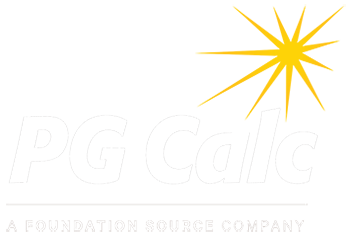On July 4th, as he vowed he would, President Trump signed into law HR 1, the One Big Beautiful Bill Act (OBBB). While technically a tax bill, the OBBB implements significant elements of the President’s second-term agenda including making permanent most of his 2017 tax cuts, which were set to expire at the end of 2025. Although the financial and tax impact on donors will vary, there is little in the OBBB that directly affects charitable gift planning, and the bill does not include many legislative priorities championed by the charitable sector.
Here is a summary of a few key individual taxpayer provisions of the OBBB along with some observations about the impact they could have on your work with donors.
Changes Affecting Donors Who Itemize Their Income Tax Deductions:
1. Caps the tax benefit of itemized deductions for taxpayers in the highest tax bracket at $0.35 for each dollar.
The OBBB limits the financial benefit of income tax deductions for the highest income taxpayers – those in the 37% bracket – by limiting the tax reduction of their deductions to 35%. Although the 2026 tax brackets will not be announced until late this year, for reference: about one half of one percent of all taxpayers are in the 37% bracket, which begins at taxable income of $626,351 for single filers and $751,601 for joint filers in 2025. Capping the tax benefit of itemized deductions reduces the value of the charitable deduction and increases the after-tax cost of giving for donors in the 37% bracket.
Explaining the impact on donors can be a bit convoluted. Beginning in 2026, the explanation for donors in the 37% bracket will have to include the fact that the financial benefit is capped at 35%. To be clear: the donor will still benefit from the income tax charitable deduction, but their income tax savings will be capped at $0.35 for each dollar contributed.
This change will have no impact on most donors and only limited impact on donors in the 37% bracket. In addition, multiple studies have shown that tax savings are not usually the primary driver of charitable giving.
2. Creates a 0.5% floor on the income tax charitable deduction.
Beginning in 2026, charitable contributions will be deductible only if they exceed 0.5% of the donor’s “contribution base” (i.e., Adjusted Gross Income without taking into account any charitable giving). Since this new “floor” is a percentage, the dollar amount will vary depending upon the donor’s circumstances. For example, a donor with a $100,000 contribution base will lose $500 of their itemized charitable deductions, but a donor with a $200,000 contribution base will lose $1,000 of their itemized charitable deductions. It appears the purpose of the new floor on charitable deductions may have been to offset some of the cost of the new deduction for non-itemizers (see below).
The effect of the deduction floor is likely minimal because, at one half of one percent, the dollar value of the floor is quite low.
3. Makes permanent the 60% of AGI contribution limit for cash contributions.
Prior to 2018 the income tax charitable deduction was limited to 50% of Adjusted Gross Income (AGI) for gifts of cash and 30% for gifts of appreciated property with a five-year carry forward for unused deductions. The Tax Cuts and Jobs Act of 2017 (TCJA or “the Trump Tax Cuts”) increased the 50% AGI limit for cash contributions to 60%, but, like many other provisions in TCJA, the higher limit was set to revert to 50% at the end of 2025. The OBBB makes the 60% limit permanent. Note that the 30% limit on gifts of appreciated property and the five-year carry forward for unused deductions are unchanged by either OBBB or TCJA.
While the AGI limits should always be a part of our donor education, it seems likely this change will have little practical impact on charitable giving, because so few donors make cash gifts of more than 50% of their AGI.
Changes Affecting Those Who Do Not Itemize Income Tax Deductions:
4. Creates a permanent deduction for taxpayers who do not itemize.
Beginning in 2026, donors who do not itemize will be allowed to deduct up to $1,000 in charitable contributions ($2,000 for joint filers). However, contributions to donor-advised funds are not eligible for the deduction for non-itemizers.
It remains to be seen how a deduction for non-itemizers affects charitable giving. The temporary deductions for non-itemizers available during the Pandemic did not appear to increase giving, perhaps indicating non-itemizers simply claimed a deduction for contributions they were already making. Although Giving USA data indicate giving was slightly higher in 2020, it is not clear this was tied to the non-itemizer deduction.
5. Makes permanent the increased standard deduction from the Tax Cuts and Jobs Act.
The TCJA doubled the standard deduction amount beginning in 2018 and indexed it for inflation each year, but those changes were scheduled to expire at the end of 2025. The OBBB makes permanent the higher standard deduction amount and inflation indexing.
When TCJA doubled the standard deduction amount, the percentage of taxpayers itemizing their income tax deductions dropped by about two-thirds from more than 30% to about 10%. The OBBB increases the standard deduction to $31,500 for Married Filing Jointly and $15,750 for Single filers. Unless a taxpayer has deductions (for example medical expenses, charitable gifts, and some taxes or interest) in excess of those limits, it will not make financial sense for the taxpayer to itemize deductions.
Since non-itemizers cannot take advantage of the itemized charitable deduction, there was concern that the loss of two-thirds of itemizers would have an adverse effect on charitable giving, but the impact was mixed. Though it bears watching, there is little reason to anticipate a substantial increase in charitable giving as a result of the deduction for non-itemizers.
6. Permanently increase the lifetime exemption for gift and estate taxes.
Although the TCJA doubled the lifetime exemption from transfer taxes – essentially the tax-free amount that can be transferred either in lifetime giving or through an estate – that change was temporary and was scheduled to expire at the end of 2025. OBBB makes the higher exemption permanent and continues to index the amount for inflation each year. Beginning in 2026, individuals will be able to pass at least $15 million tax free, or $30 million for a married couple. As a result, estimates predict fewer than one half of one percent of all estates will be subject to estate taxes.
The immediate impact of this change on charitable giving is uncertain at best, because it is not clear that estate tax savings have ever been a significant motivator for estate giving. In any case, the impact on receipts from estate gifts will not manifest until some years in the future at the end of the donor’s lifetime.
What remains clear is that a tax-savvy strategy for all estate donors is beneficiary designations from qualified retirement plans. For the very wealthy, there is still an unlimited estate tax deduction for charitable contributions of these and other assets. For everyone, the opportunity to avoid income taxes on tax-deferred assets is a tangible tax incentive.
The Bottom Line Is Unchanged
Tax incentives for charitable giving have long been a part of our tax laws. On balance, the OBBB dilutes some of the tax incentives we have enjoyed over the years, but the changes seem minor. The fact remains: donors do not give to save taxes; they give to support the missions of our organizations.
Particularly in these unsettled times, donors are seeking ways to remain involved and engaged, and our communities need the charitable sector more than ever. Donors will need some time to absorb how the OBBB will affect their personal finances, but our job remains unchanged: make certain our donors’ passion for our mission is unflagging.

